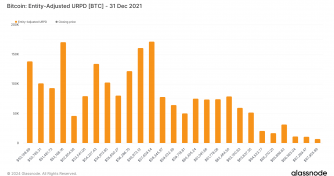
As the debate over the trustworthiness of stablecoins intensifies due to Terra, one expert thinks builders should push for the coins to be decentralized with a clear use case.
In light of recent market effects due to the collapse of the Terra USD (UST) stablecoin, several questions should be answered about what makes a stablecoin usable as the crypto market expands.
Co-founder of crypto financial service provider VegaX Holdings Sang Lee favors decentralized stablecoins over their centralized counterparts but thinks they must be coins that people can trust, which poses a dilemma for the industry.
In a conversation with Cointelegraph on May 13, Lee pointed out that the important utility stablecoins serve in the crypto ecosystem was offering traders a uniform unit of account, like the U.S. dollar does for the global markets. However, he noted that “the way in which these things are maintained is important, too.”
“The most important thing is that it holds its peg because then that single unit of account begins to be unreliable and unusable.”
Lee believes that for stablecoins to be truly usable, people have to trust them. This creates a dilemma because, he said, “you can only use a currency if you trust it, but you trust it because other people use it.” In his view, that dilemma can be nipped in the bud by ensuring there is a broad use case before building because the “use case is infinitely more important than collateral.”
The issues of trust and design are at the forefront of the discussion surrounding the UST stablecoin, which lost its peg and drove down the price of Terra (LUNA) and Bitcoin (BTC), its collateral. As trust rapidly faded in the stablecoin, so did its utility, forcing its value and the value of LUNA to evaporate.
There are at least 97 stablecoins across the crypto industry today according to CoinGecko, most of which are pegged to the USD. While that number may seem high, Lee contests that there should be “more than a handful” of them, and they should aim to be decentralized.
“We can’t have ‘one to rule them all,’ because that’s what we’re trying to stop in the first place.”
Among the top five stablecoins by market cap, just Dai (DAI) and Magical Internet Money (MIM) are aiming to be decentralized.
Lee acknowledges that it is unrealistic to expect the leading stablecoins to be decentralized right away but feels they “should be on a path to it in the future.” This idea stems from his perception that the single point of failure that cryptocurrency is trying to solve is “a lack of transparency and accountability” in centralized currencies.
Related: SEC’s Hester Peirce says new stablecoin regs need to allow room for failure
In pushing crypto into a more decentralized landscape, Lee warns those in the industry to move away from a combative stance and more into a friendly, collaborative one. He said,
“We can move the world forward into a blockchain-based ecosystem, which is overall a good thing. But it’s better to talk about what we in blockchain think is important rather than shouting that our tech is better.”






